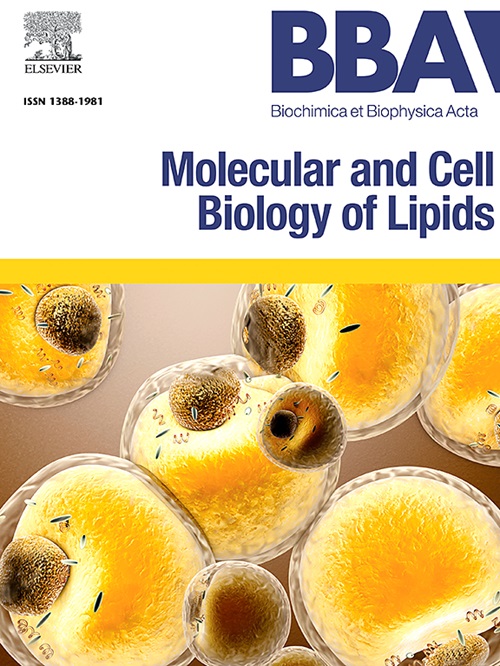Agonist- and stress-driven compartmentalized phosphoinositide signaling in cells
IF 3.3
2区 生物学
Q2 BIOCHEMISTRY & MOLECULAR BIOLOGY
Biochimica et biophysica acta. Molecular and cell biology of lipids
Pub Date : 2025-07-05
DOI:10.1016/j.bbalip.2025.159662
引用次数: 0
Abstract
Phosphoinositides (PIPs) are essential lipid messengers that regulate cellular responses to external stimuli and stress through spatially organized signaling pathways. In recent years, compartment-specific mechanisms by which PIP signaling integrates diverse cellular processes have been extensively expanded. This review discusses the distinct roles of PIP signaling across cellular compartments, including the plasma membrane, endosomes, lysosomes, protein scaffolds, and the nucleus. PIPs coordinate key processes such as receptor trafficking, cytoskeletal remodeling, autophagy, and signal transduction. Dynamic lysosomal PIP switches regulate critical functions like nutrient sensing, mTORC1 activity, and membrane repair, emphasizing their adaptability in maintaining cellular homeostasis. Furthermore, emerging evidence highlights nuclear PIP signaling in transcriptional regulation, DNA repair, and oncogenic pathways. Dysregulation of PIP signaling pathways is implicated in diseases such as cancer, neurodegeneration, and lysosomal storage disorders, underscoring their therapeutic potential in various pathological conditions.
细胞中激动剂和应激驱动的区隔化磷酸肌苷信号。
磷酸肌苷(PIPs)是一种重要的脂质信使,通过空间组织的信号通路调节细胞对外部刺激和应激的反应。近年来,PIP信号整合多种细胞过程的室特异性机制已被广泛扩展。本文讨论了PIP信号在细胞质膜、核内体、溶酶体、蛋白支架和细胞核中的不同作用。pip协调关键过程,如受体运输、细胞骨架重塑、自噬和信号转导。动态溶酶体PIP开关调节营养感知、mTORC1活性和膜修复等关键功能,强调其在维持细胞稳态中的适应性。此外,新出现的证据强调了核PIP信号在转录调控、DNA修复和致癌途径中的作用。PIP信号通路的失调与癌症、神经退行性变和溶酶体贮积障碍等疾病有关,强调了它们在各种病理条件下的治疗潜力。
本文章由计算机程序翻译,如有差异,请以英文原文为准。
求助全文
约1分钟内获得全文
求助全文
来源期刊
CiteScore
11.00
自引率
2.10%
发文量
109
审稿时长
53 days
期刊介绍:
BBA Molecular and Cell Biology of Lipids publishes papers on original research dealing with novel aspects of molecular genetics related to the lipidome, the biosynthesis of lipids, the role of lipids in cells and whole organisms, the regulation of lipid metabolism and function, and lipidomics in all organisms. Manuscripts should significantly advance the understanding of the molecular mechanisms underlying biological processes in which lipids are involved. Papers detailing novel methodology must report significant biochemical, molecular, or functional insight in the area of lipids.

 求助内容:
求助内容: 应助结果提醒方式:
应助结果提醒方式:


